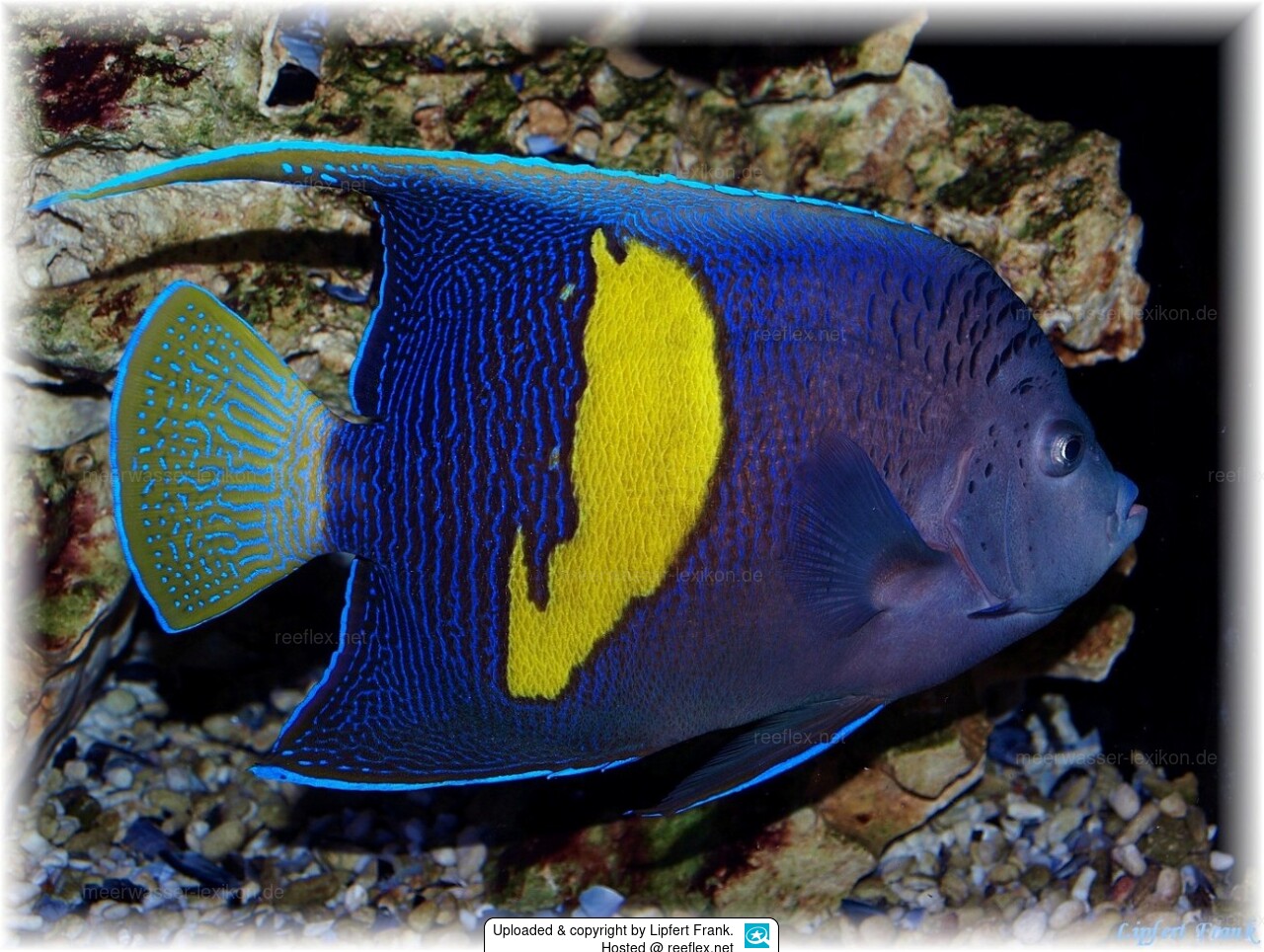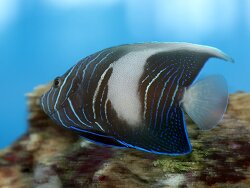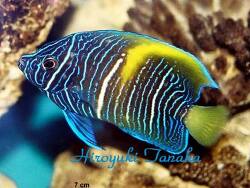Info
Pomacanthus maculosus also known as the Red Sea Angelfish or Yellowbar Angelfish is a striking addition, found in the Red Sea, northeast coasts of Africa and Arabian Gulf, also around the Arabian Peninsula, the eastern tip of Persian Gulf, and the northwestern Indian Ocean, coasts of Somalia and Kenya.
The Red Sea Angelfish has an overall blue to dark blue body with a large yellow blotch centrally on the side and the forehead has smaller black vertical dots. The dorsal and anal fins are sharply pointed posteriorly, forming a filament on each fin. The caudal fin is whitish to yellowish with numerous yellowish fine dots and the margin of the fin is white. The pelvic fins are dark blue. Juveniles differ greatly, they are patterned in a coloration of deep blue with narrow vertical white lines on the side like those of other Pomacanthus members.
Pomacanthus maculosus is easy to keep in captivity once it has been successfully acclimated. They will reach 50 cm in the wild, and must be given plenty of room to avoid confinement stress issues---we recommend 3500 liters and up. It is believed they eat mostly sponges, tunicates, and algae in the wild. No special food is needed in the aquarium, they will readily accept a wide variety of foods.
Synonymised names
Chaetodon maculosus Forsskål, 1775 · unaccepted
Holacanthus caerulescens Rüppell, 1830 · unaccepted > junior subjective synonym
Holacanthus striatus Rüppell, 1836 · unaccepted
Pomacanthodes striatus (Rüppell, 1836) · unaccepted
Pomacanthops filamentosus Smith, 1955 · unaccepted
Pomacanthus striatus (Rüppell, 1836) · unaccepted







 Lipfert Frank
Lipfert Frank




























